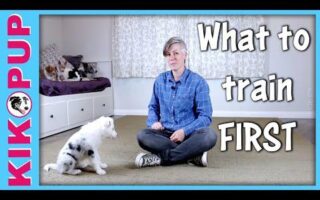Title: Understanding Leash Reactivity: Navigating the Challenges of Our Canine Companions
Introduction:
In the vibrant tapestry of canine behavior, few traits spark as much concern and confusion among dog owners as leash reactivity. Picture this: a sunny afternoon stroll in the park, a gentle breeze rustling the leaves, and suddenly, your dog erupts into a whirlwind of barks and lunges at passing pedestrians or other pooches. What happened? This seemingly unpredictable response can leave dog lovers feeling flustered and worried—about their pet’s well-being, about their own safety, and about how to navigate social settings with their furry friends. Leash reactivity, often misunderstood, is a complex behavioral issue that can stem from a variety of underlying causes. In this article, we’ll delve into the intricacies of leash reactivity—examining its roots, the science behind it, and effective strategies to manage and mitigate this common challenge. By shedding light on this topic, we aim to empower dog owners with the knowledge and tools to transform walks from a source of stress into enjoyable adventures.
Table of Contents
- Understanding Leash Reactivity: Unraveling the Behavior Behind the Barks
- Building a Strong Foundation: Training Techniques that Foster Calmness
- Navigating the Outdoors: Strategies for Safe and Enjoyable Walks
- Promoting Positive Interactions: Tips for Socializing Your Leash Reactive Dog
- Q&A
- In Summary
Understanding Leash Reactivity: Unraveling the Behavior Behind the Barks
Leash reactivity often stems from a mix of fear, frustration, and excitement, with dogs feeling restricted by the leash while facing an overwhelming stimulus. When a leash-reactive dog sees another dog, person, or object, their instinct is triggered, leading to vocalizations such as barking, lunging, or growling. Understanding the underlying emotions can help owners address this behavior more effectively. Here are some common causes of leash reactivity:
- Fear: Dogs may feel threatened by the presence of other animals or unfamiliar stimuli.
- Frustration: The leash prevents them from engaging with what they want to approach.
- Overexcitement: A heightened sense of excitement can lead to over-stimulation during walks.
Recognizing the triggers is crucial to creating a positive experience for both the dog and the owner. Behavior modification strategies, such as desensitization and counter-conditioning, can be effective in reducing leash reactivity over time. For effective management, it helps to monitor and adapt to your dog’s reactions. Below is a simple strategy outline:
| Steps | Actions |
|---|---|
| Identify Triggers | Note what causes your dog to react while on a leash. |
| Practice Distance | Maintain a safe distance from triggers to prevent reacting. |
| Use Treats | Reward your dog for calm behavior when near triggers. |
| Gradual Exposure | Slowly decrease the distance to triggers as your dog becomes more comfortable. |
Building a Strong Foundation: Training Techniques that Foster Calmness
Training a leash-reactive dog involves cultivating an environment where your dog feels secure and calm. Positive reinforcement is essential; reward your dog for relaxed behavior, especially when encountering triggers. This could be anything from passing other dogs to encountering loud noises. Establish a consistent routine that includes regular training sessions and socialization opportunities, allowing your furry friend to gradually become more comfortable with various stimuli. Incorporating desensitization exercises—where the dog is gradually exposed to triggers from a safe distance—will aid in building confidence without overwhelming them.
Implementing calming techniques during training sessions can help reinforce a state of tranquility. Techniques such as controlled breathing for both you and your dog can induce a sense of calm. Consider using a heart rate monitor for your dog to gauge stress; this can assist in tailoring sessions based on their comfort levels. Below is a simple guide to a few effective techniques that can be integrated into routine training:
| Technique | Purpose | Tips |
|---|---|---|
| Controlled Exposure | Desensitizes to triggers | Start at a distance |
| Positive Reinforcement | Encourages calm behavior | Use high-value treats |
| Relaxation Exercises | Reduces anxiety | Practice sit and stay |
Navigating the Outdoors: Strategies for Safe and Enjoyable Walks
When taking your leash-reactive dog for a stroll in nature, preparation is key to ensuring both their happiness and safety. Understanding your dog’s triggers can dramatically improve your outings. Begin with a calm and controlled environment. Here are some strategies to consider:
- Know the areas to avoid: Scout for busy trails or dog parks that could overstimulate your pet.
- Choose off-peak times: Walking early in the morning or later in the evening can help find quieter paths.
- Use appropriate equipment: A front-clip harness can give you better control and reduce pulling.
Fostering a positive experience during your walks can alleviate anxiety for both you and your dog. Consistent rewards reinforce good behavior, making future walks more enjoyable. To facilitate this process, consider tracking your dog’s progress:
| Walking Environment | Reaction | Notes |
|---|---|---|
| Quiet Nature Trail | Calm | Recommended for relaxation. |
| Busy City Street | Reactive | Avoid to minimize stress. |
| Dog Park (Peak Time) | Very Reactive | High stimulation; not advisable. |
Promoting Positive Interactions: Tips for Socializing Your Leash Reactive Dog
Socializing a leash reactive dog requires patience and a thoughtful approach. Begin by identifying triggers that provoke your dog’s reaction, whether it be other dogs, people, or specific environments. By understanding these triggers, you can create controlled exposure experiences that help your dog practice calmness. Utilize a variety of environments for training, such as quiet parks or less crowded streets. When observing a potential trigger, keep a safe distance where your dog feels secure and can remain focused on you. Gradually decrease the distance as your dog becomes comfortable, rewarding calm behavior with treats and praise.
Incorporating positive reinforcement techniques is essential for encouraging desirable behaviors. Use treats, toys, or verbal praises to reward your dog when they remain calm in the presence of triggers. Consistency is key; ensure that all family members understand the training cues and rewards. Create a schedule for socialization sessions, including playdates with well-behaved dogs and visits to dog-friendly locations. If your dog enjoys training games, consider using them during walks to divert attention from potential distractions:
| Game | Description |
|---|---|
| Look at That | Teach your dog to look at a trigger and then back at you for a reward. |
| Match and Mingle | Arrange controlled introductions with calm dogs that can help your dog learn social cues. |
| Focus Exercises | Practice “watch me” to strengthen the bond and redirect attention away from distractions. |
Q&A
Q&A: Understanding and Managing a Leash Reactive Dog
Q1: What does it mean for a dog to be “leash reactive”?
A1: A leash reactive dog exhibits heightened responses when on a leash, often reacting with barking, lunging, or excessive excitement towards other dogs, people, or stimuli. This behavior can stem from fear, frustration, or a desire to play but is accentuated by the constraints of being on a leash.
Q2: What causes leash reactivity in dogs?
A2: Leash reactivity can be rooted in various factors, including lack of socialization during critical developmental periods, past negative experiences, or innate personality traits. For some dogs, the feeling of confinement can lead to increased anxiety, making them more reactive to perceived threats or distractions.
Q3: How can I identify if my dog is leash reactive?
A3: Look for signs such as intense barking, growling, or lunging when encountering other dogs or people. Your dog may also exhibit tense body language, like raised hackles or a stiff tail. If your dog pulls forcefully on the leash as they approach another stimulus, they may be expressing reactivity.
Q4: What steps can I take to manage leash reactivity?
A4: Begin by consulting a professional dog trainer specializing in reactive behavior. Gradually expose your dog to their triggers at a distance where they remain calm. Utilize positive reinforcement to reward desirable behaviors, and incorporate tools like no-pull harnesses to help you maintain control. Consistent training and patience are key.
Q5: Are there specific training techniques that help with leash reactivity?
A5: Yes! Techniques like desensitization and counter-conditioning can be particularly effective. Desensitization involves exposing your dog to their triggers at a manageable distance, while counter-conditioning pairs the presence of triggers with positive rewards, like treats, to help change their emotional response.
Q6: How can I support my dog’s emotional well-being during training?
A6: Providing a safe space for your dog is essential. Ensure that they have a designated home environment where they can relax. Engage in regular exercise and mental stimulation to reduce overall stress. always approach training with understanding and compassion, allowing your dog the room to grow and adapt.
Q7: Is leash reactivity a permanent issue?
A7: Not necessarily! With consistent training, patience, and appropriate management strategies, many dogs can learn to cope and reduce their reactivity on leash. It often requires time and dedication, but improvement is achievable, allowing for more enjoyable walks and social interactions.
Q8: Can I use tools like collars or muzzles for a leash reactive dog?
A8: Yes, management tools like head collars, no-pull harnesses, or muzzles can be beneficial in certain situations. These should be used as part of a comprehensive approach, focusing on training and behavior modification rather than a sole solution. Always ensure that any tool used is comfortable and suited to your dog’s needs.
Q9: What role does socialization play in reducing leash reactivity?
A9: Socialization is critical in helping dogs learn how to interact appropriately with their environment. The more positive experiences a dog has with other dogs, people, and various settings, the more confident and less reactive they typically become. Early and ongoing socialization can make a significant difference in a dog’s behavior.
Q10: Where can I find resources or support for leash reactive dogs?
A10: Many local dog training facilities, animal behaviorists, and online communities offer valuable information and support. Websites, books, or classes specifically addressing reactive behavior can also provide insights and techniques. Remember, connecting with professionals who understand leash reactivity can greatly enhance your journey with your dog.
Navigating life with a leash reactive dog can be challenging, but with the right knowledge and techniques, it’s possible to foster a harmonious relationship and encourage positive behaviors.
In Summary
In the intricate dance between canine and handler, leash reactivity can feel like a sudden stumble, a misstep in an otherwise harmonious routine. Yet, each challenge presents an opportunity for understanding and growth. As we navigate the pathways of training and socialization, it’s essential to approach leash reactivity not as an insurmountable obstacle, but as a journey towards a deeper bond with our furry companions. By fostering patience, employing positive strategies, and seeking out resources, we can transform tense moments into milestones of progress. Remember, every dog is unique, and with time, commitment, and compassion, even the most reactive pooch can learn to stride confidently by your side. Embrace the journey, celebrate the small victories, and together, let’s pave the way towards a more peaceful and enriching experience for both you and your dog.

